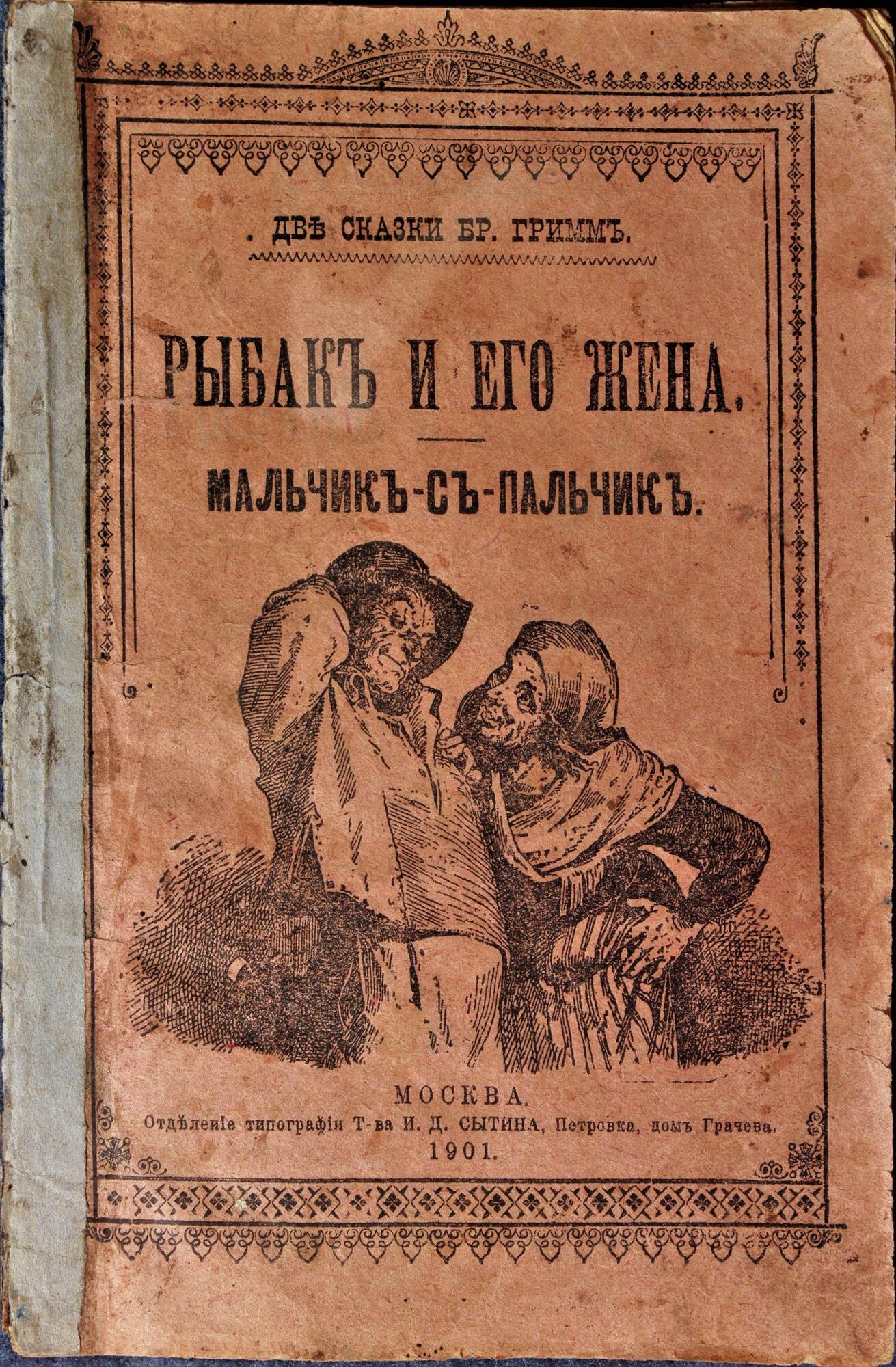Several folk schools were opened at the end of the 19th — beginning of the 20th century in Belgorod District, which included Shebekino volost. More and more people became literate in Russia, and books were in strong demand.
Ivan Sytin’s partnership in Moscow was one of the popular printing houses. His books were cheap and printed pocket-sized, so they were convenient to carry. Sytin’s products could be found even in remote villages that had no libraries, universities, or museums.
The Shebekino Museum collection houses storybooks of 1901, written by German authors — the Brothers Grimm, and published by the Sytin’s publishing house.
Ivan Sytin was a major book publisher — enlightener who produced hundreds of millions of inexpensive textbooks, general education and school manuals, good sellers for public reading, and libraries in Russia. He was called the “Russian Ford”, the “de facto minister of education”, the “book publishing artist”, and the “Russian original genius”.
Sytin was born in 1851 in the family of a volost clerk. He finished three years of rural school, and from the age of 12, he worked as a street vendor at Nizhny Novgorod Fair. In 1866, Sytin moved to Moscow and got a job as an assistant in a merchant furrier’s bookstore, and soon he drew the owner’s attention due to his diligence and ingenuity.
In 1876, Ivan Sytin married the merchant’s daughter and took a dowry of 4,000 rubles. His former lord lent him another 3,000 rubles. With this money, Sytin bought a lithographic machine for printing cheap popular prints and opened a workshop. The first popular products of Sytin’s printing house were battle maps of the Russo-Turkish War of 1877–1878. The owner formed the assortment himself: it included cheap popular paintings, drawn by famous artists. Totally, Sytin produced more than 50 million copies of print production per year: portraits of tsars, nobles, generals, fairy tales and song illustrations, religious, everyday life, and humorous pictures.
By 1914, the print production of Sytin’s printing house built up a quarter of the country’s print turnover. He published alphabet books, novels, short stories, and collections of poems, fairy tales of different nations, as well as authors’ tales by Alexander Pushkin, Vasily Zhukovsky, the Grimm brothers, and Charles Perrault. Sytin also produced the children’s magazines “Children’s Friend”, “Bee”, and “Little World”. Since 1891, the oldest Russian magazine “Vokrug Sveta” has been published.
After the revolution, all Sytin’s enterprises were nationalized, but he continued to work in the publishing business as a commissioner of his former printing house. He procured paper for his books abroad through his casual friends. Ivan Sytin was offered to head the RSFSR Gosizdat [State Printing House], but he refused, having alluded to “illiteracy”. In 1928, he was awarded a personal pension.
Ivan Sytin’s partnership in Moscow was one of the popular printing houses. His books were cheap and printed pocket-sized, so they were convenient to carry. Sytin’s products could be found even in remote villages that had no libraries, universities, or museums.
The Shebekino Museum collection houses storybooks of 1901, written by German authors — the Brothers Grimm, and published by the Sytin’s publishing house.
Ivan Sytin was a major book publisher — enlightener who produced hundreds of millions of inexpensive textbooks, general education and school manuals, good sellers for public reading, and libraries in Russia. He was called the “Russian Ford”, the “de facto minister of education”, the “book publishing artist”, and the “Russian original genius”.
Sytin was born in 1851 in the family of a volost clerk. He finished three years of rural school, and from the age of 12, he worked as a street vendor at Nizhny Novgorod Fair. In 1866, Sytin moved to Moscow and got a job as an assistant in a merchant furrier’s bookstore, and soon he drew the owner’s attention due to his diligence and ingenuity.
In 1876, Ivan Sytin married the merchant’s daughter and took a dowry of 4,000 rubles. His former lord lent him another 3,000 rubles. With this money, Sytin bought a lithographic machine for printing cheap popular prints and opened a workshop. The first popular products of Sytin’s printing house were battle maps of the Russo-Turkish War of 1877–1878. The owner formed the assortment himself: it included cheap popular paintings, drawn by famous artists. Totally, Sytin produced more than 50 million copies of print production per year: portraits of tsars, nobles, generals, fairy tales and song illustrations, religious, everyday life, and humorous pictures.
By 1914, the print production of Sytin’s printing house built up a quarter of the country’s print turnover. He published alphabet books, novels, short stories, and collections of poems, fairy tales of different nations, as well as authors’ tales by Alexander Pushkin, Vasily Zhukovsky, the Grimm brothers, and Charles Perrault. Sytin also produced the children’s magazines “Children’s Friend”, “Bee”, and “Little World”. Since 1891, the oldest Russian magazine “Vokrug Sveta” has been published.
After the revolution, all Sytin’s enterprises were nationalized, but he continued to work in the publishing business as a commissioner of his former printing house. He procured paper for his books abroad through his casual friends. Ivan Sytin was offered to head the RSFSR Gosizdat [State Printing House], but he refused, having alluded to “illiteracy”. In 1928, he was awarded a personal pension.




